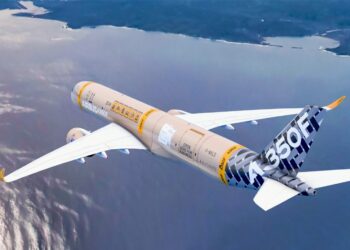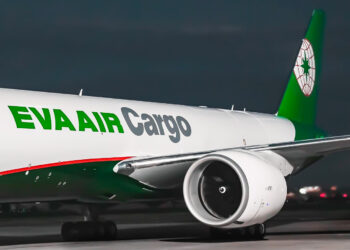No products in the cart.
Intrepid orders two 747-8Fs

US-based lessor Intrepid Aviation reached an agreement with Boeing under which it will swap two of its current six orders for 777-300ER passenger aircraft for 747-8 freighters.
Delivery of both freighters is scheduled for 2017, and Intrepid said both would go “on very long lease to one of the industry’s premier cargo operators.”
The identity of the “premier cargo operator” was not released, but one obvious possibility is the Volga-Dnepr Group, which this year concluded an agreement with Boeing under which it would take twenty 747-8Fs “through a mix of direct purchases and leasing.”
As we wrote earlier this week in our discussion of the 747-8 program, Boeing is at a critical point, with an order backlog barely sufficient to keep the production line running through mid-2019 – even at the current build rate of just six aircraft per year. It is possible that there may be a few orders for the passenger variant, but Boeing appears to believe that the fate of the program hinges mostly on the freighter, the 747-8F.
The two orders from Intrepid certainly won’t hurt, but, even if they are for an end user other than one of the Volga-Dnepr Group airlines, they need to be followed by many more orders if the 747-8 program is to be continue past 2019.
So, how likely are more orders?
One of the things that will determine whether or not orders for the 747-8F pick up is the growth in demand for air cargo, and in a presentation following the recent delivery of the last 747-8F ordered by Cargolux, Boeing VP Bruce Dickinson addressed that subject.
According to Boeing, since 1980, worldwide air cargo traffic has grown at an average rate of 5.2% per year. However, in the last decade, the annual growth rate has fluctuated wildly, and in the last five years, the average annual increase has been just 1.6%. Despite this recent slowing, Boeing believes that over the next twenty years, through 2035, we will see annual average demand growth return to 4.2% – a level not far below the long-term average of 5.2%.

What does this mean for the 747-8F? In Boeing’s view, it means a steady flow of orders. As shown in the chart at right, Boeing counted 1,770 jet freighters in the worldwide fleet at the end of 2015, of which about 40%, or a little over 700, were large widebodies. Given 4.2% annual growth in air freight demand, Boeing believes the fleet in 2035 will need about 1,200 large widebodies. This is 500 more than are in the fleet now, but Boeing expects that about 450 units in the current fleet will be retired over the next twenty years, meaning the number of large widebody freighters that must be added to bring the 2035 total to 1,200 is 950.
Of this 950, Boeing believes that about 450 will be converted passenger aircraft. (Although, since there are no currently active large widebody conversion programs, this is a subject that probably needs further discussion). This leaves a need for 500 new-build large widebody freighters over the next twenty years, an average of about twenty-five per year.
There are currently only two production widebody freighters available – the 777F and 747-8F. At some point, Boeing will replace the 777F with a freighter variant of the 777X, and at some point 747-8F production will end, but for most of the next twenty years, anyone who wants a new-build large widebody freighter will have to order either a 777 or a 747-8.
Needless to say, there is no guarantee that the world in 2035 will be as Boeing (or anyone else) predicts. But if things do play out in a way not too different from its prediction, Boeing believes there will be a resurgence of interest in the 747-8F. Not tomorrow, or the day after, but certainly within the next two-to-three years.




